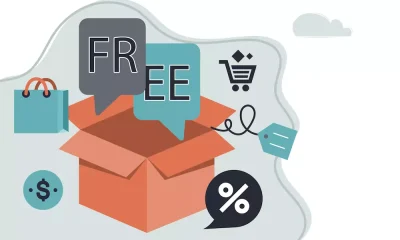Marketing
How Your Business Can Finally Make Sense of Data

Data can improve your business in many ways. When you collect and analyze it appropriately, data can not only help your business decide when to take action on opportunities, it can measure the impact of those and other initiatives. Plus, data provides insights into how your business is performing and where there can be improvements in efficiencies.
However, you feel like you’re drowning in data! Like you have analytics and metrics oozing out of every business system, platform, or software solution.
While data is good, it’s nothing without a plan for how you can leverage the insights you gather. So your number one goal should be to make sense of the numbers you have available at your fingertips.
How to Make Sense of Your Data
Fifteen or twenty years ago, the biggest challenge for a business was getting access to thecorrectt data and information.
Almost every data strategy was focused on answering the question, “How can we get access to more data?”
Fast forward to today, and that’s no longer an issue. Businesses are drowning in data – so much so that it’s become a detriment to companies that don’t have the internal systems to properly handle the rapid influx of new data.
As things currently stand, the biggest challenge is figuring out how to make sense of the available data.
Sound familiar?
The good news is that there are systems and processes you can put in place to streamline your approach to data and make sense of the information you’re collecting. Here are a few tips to get you started moving in the right direction:
Establish the Correct Infrastructure
The first step is to get the proper infrastructure in place. Without a proper foundation to store and secure data, it’s virtually impossible to interpret and leverage the data in a meaningful way.
Data Protection
Security is the primary concern. When you take hold of data – particularly confidential customer data – it becomes your responsibility to safeguard it from outside sources who could compromise or manipulate sensitive information.
It’s also essential to think about integration. The tools and platforms you use must be able to “talk” with one another. Any lack of compatibility will pinder your pursuit of leveraging data to make sound business decisions.
Prioritize What You Collect
Just because you can collect something doesn’t necessarily mean you should. It’s essential to narrow your focus and zero in on the correct data. Otherwise, you’ll exhaust your resources and overwhelm your systems.
Generally speaking, there are five categories of data.
Types of Customer Data
- User data – the attributes of the customer e.g. demographic, region, what they like, dislike, and so on
- Engagement data – the action the customer takes, e.g., clicking on a link in your email marketing message
- Feedback data – e.g. the comments or contact they initiate with your business
- Outcomes data – e.g. make a purchase, or leave the shopping cart empty
- Impact data – measuring changes in user knowledge, sand kills as a result of your marketing and communication
Within these overarching categories are dozens of subcategories, metrics, and key performance indicators (KPIs). Marketing is not just the creative campaigns; it also involves setting up measurements and then the analysis of data to report on campaign success and home other campaigns to improve conversion.
Start small and focused; then, you can expand your reach
Increase Visibility
Raw data sitting in a spreadsheet imakeseven the most seasoned data scientist’s eyes glaze over. You can only stare at many numbers and decimals before everything loses meaning and value.
To help your business make sense of data, you must begin by increasing visibility. This means working with the human brain to use management reporting tools that bring data to life in the form of visually rich and stimulating dashboards, charts, graphs, and interactive tables. You should be able to take a glance at a dashboard and instantly have an idea of where things stand.
Learn to Leverage the Data
Data should not be primarily a historical tool for analyzing past events. It needs a futuristic orientation. Data scientist Tom O’Neill writes….
Spend your time using data to make testable, tactical predictions, then take actions based on those predictions and feed the results back into your process to improve future decisions.
The data-driven decision engine looks a lot like the scientific method.
Historical analysis should be focused on learning why something happened, not just reporting what happened.
If you learn to leverage data in this capacity, good things will happen for your organization today, tomorrow, and for years
Usher Your Business into the New Age
Data can either be an asset or a liability for your business. And if you’re collecting insights without a strategy for organizing, storing, and leveraging data, it’s almost certainly the latter.
Now is the time to redefine your approach to data and finally make sense of the information you’re collecting. Doing so will empower your company and key decision-makers to make smarter choices that positively impact all key stakeholders.









